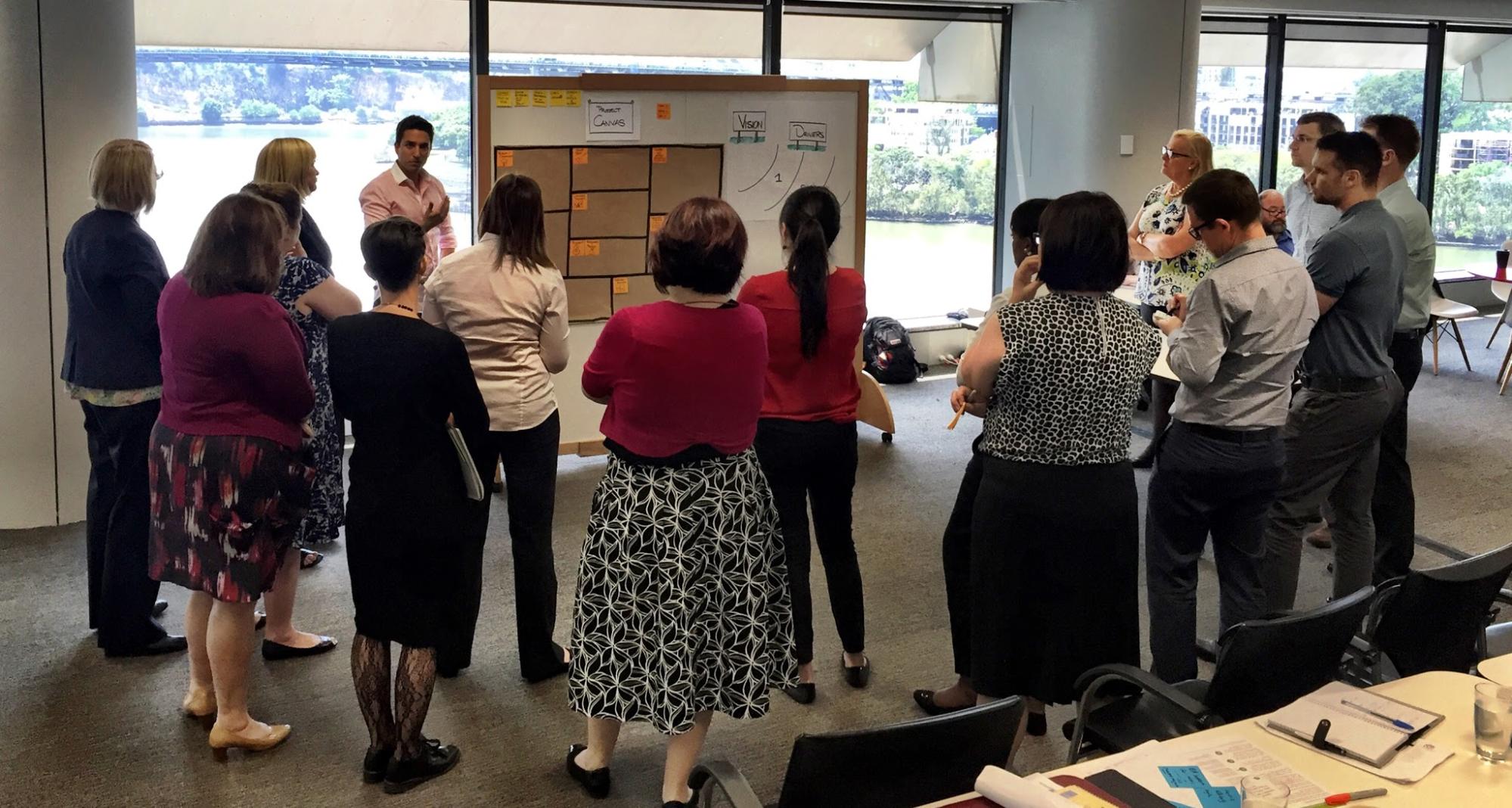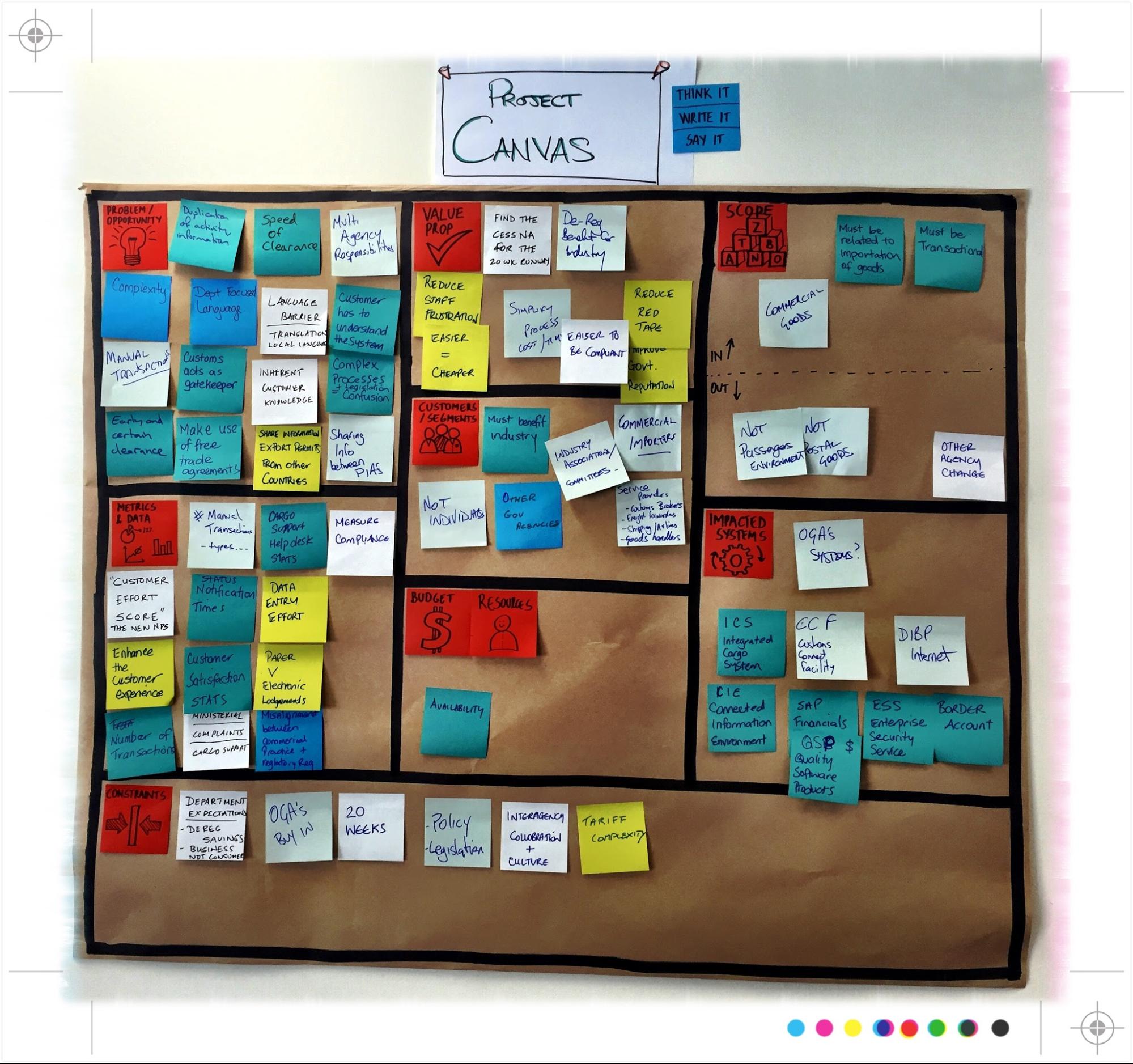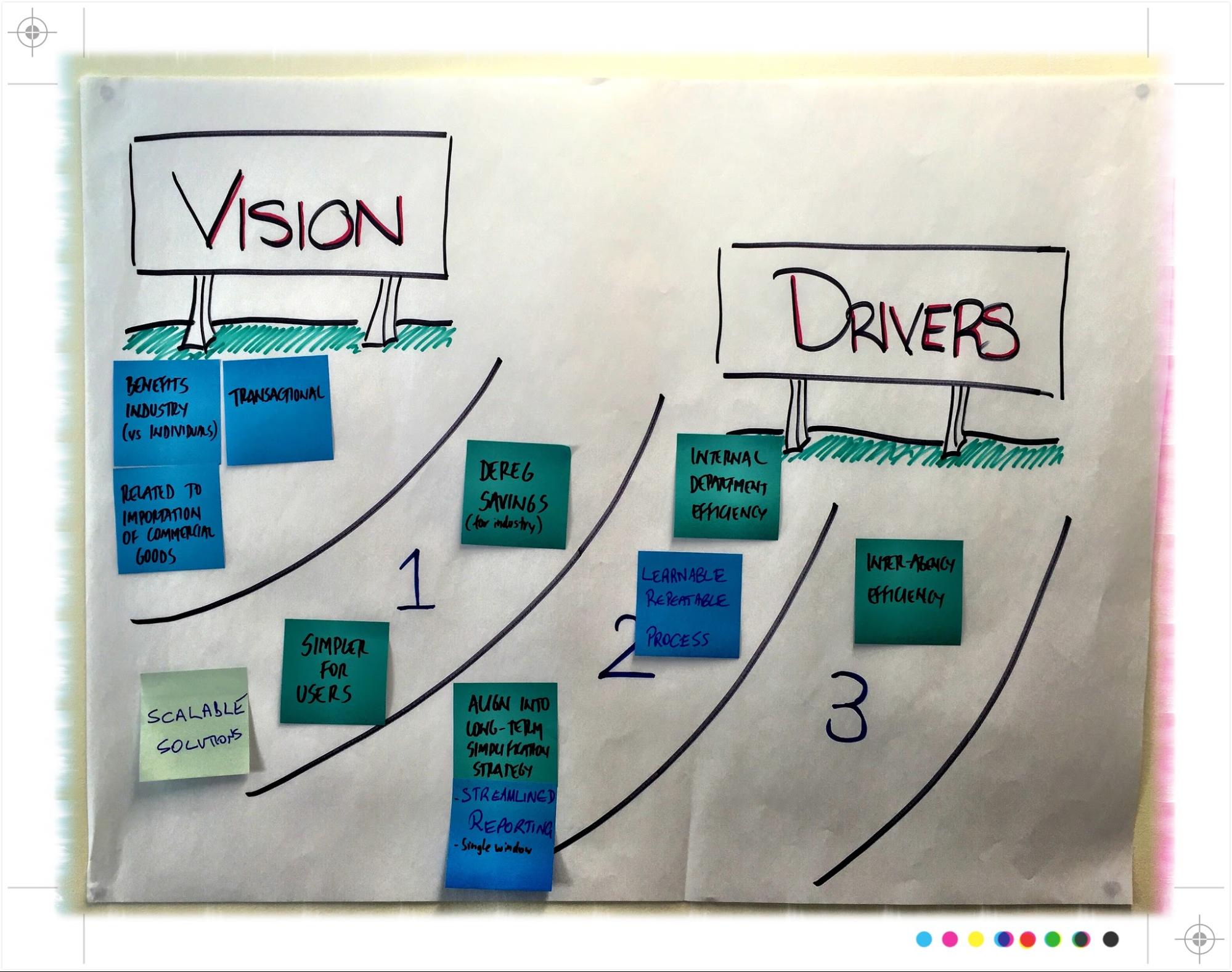2.2. The kick off
The Discovery starts with a kick-off session, which includes the whole team, plus subject matter experts and business owners, and three assessors that have been assigned to this product. It’s helpful for senior stakeholders to drop in for a short while too. Kicking off a Discovery is typically a collection of high-energy collaborative workshops over the course of 2 days.
Before the session, you should collect existing research and data around the service and the current user experience.
A good kick-off should:
- establish the team with a team-building exercise, allow the team to really understand the skills and interests of each other
- clearly articulate the role definitions, and agree the roles of each person in the team
- cover what you already know about the problem space
- build a vision statement of what you’re trying to do
- define what success looks like at the end of the Discovery: the things you want to find out, and the artefacts you need to produce (see the section later in this document)
- discuss the hopes and concerns about the Discovery, and how they can be mitigated
- set out the timeframe, the key milestones, when (and how often) you’ll be reporting back to stakeholders
- agree how you’re going to work:
- the team principles and values, and the ground rules
- the operating rhythm, team rituals: stand ups, planning, showcases and retrospectives
- the channels you will use to communicate
- how you will keep track of the tasks you’re working on? (JIRA, kanban wall)
- where you’ll be based
- who will be working on what
 The team walk through the Discovery Canvas.
The team walk through the Discovery Canvas.
 The Product Manager talks the team through the problem statement.
The Product Manager talks the team through the problem statement.
 A populated Discovery Canvas.
A populated Discovery Canvas.

 Sample Vision and Drivers.
Sample Vision and Drivers.